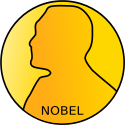Dorothy Crowfoot Hodgkin
 | |
| Personlig information | |
| Født | 12. maj 1910 Kairo, Egypten |
| Død | 29. juli 1994 (84 år) Ilmington, Warwickshire, England |
| Dødsårsag | Hjerneblødning |
| Nationalitet | |
| Bopæl | University of Oxford |
| Far | John Winter Crowfoot |
| Mor | Grace Mary Crowfoot |
| Søskende | Joan Crowfoot, Elizabeth Grace Crowfoot, Diana Crowfoot |
| Ægtefælle | Thomas Lionel Hodgkin (1937-1982) |
| Uddannelse og virke | |
| Uddannelsessted | Somerville College University of Cambridge |
| Medlem af | Royal Society (fra 1947), Sovjetunionens videnskabsakademi (fra 1976), Det Kongelige Nederlandske Videnskabsakademi, National Academy of Sciences (fra 1971), Manchester Literary and Philosophical Society med flere |
| Beskæftigelse | Biofysiker, kristallograf, fysiker, biokemiker, kemiker, biolog |
| Forskningsområde | Biokemi |
| Arbejdsgiver | University of Cambridge |
| Arbejdssted | Oxford, Cambridge |
| Kendt for | Udviklingen af Proteinkrystallografi Bestemmelsen af insulinets krystalstruktur |
| Nomineringer og priser | |
| Udmærkelser | Royal Society Bakerian Medal, Bakerian Lecture (1972), Lomonosov-guldmedaljen (1986), Fellow of the Royal Society (fra 1947), Banting Medal (1972) med flere |
| Nobelpris | |
| Information med symbolet | |

Dorothy Mary Crowfoot Hodgkin (født 12. maj 1910 i Kairo, død 29. juni 1994 i Shipston-on-Stour) var en britisk kemiker og nobelprismodtager.
Crowfoot studerede kemi ved Somerville College i Oxford fra 1928 til 1932, og fik interesse for røntgenkrystallografi. Hun forskede senere i Cambridge sammen med John Desmond Bernal (den senere professor ved University of London), som blev hendes mentor og en livslang ven. I 1934 vendte hun tilbage til Oxford, hvor hun kortlagde krystalstrukturerne for insulin, penicillin og B12 vitamin. Det var for dette arbejde hun blev tildelt nobelprisen i kemi i 1964.
I 1976 modtog hun som den første, og i 2018 hidtil eneste, kvinde Copleymedaljen.
Eksterne henvisninger
| Spire Denne naturvidenskabelige biografi er en spire som bør udbygges. Du er velkommen til at hjælpe Wikipedia ved at udvide den. |
Medier brugt på denne side
Forfatter/Opretter: User:Gusme (it:Utente:Gusme), Licens: CC BY-SA 3.0
Vector image of the Nobel prize medal
Forfatter/Opretter:
SVG by Indolences.
Recoloring and ironing out some glitches done by Rainer Klute., Licens: CC BY-SA 3.0Stylised atom. Blue dots are electrons, red dots are protons and black dots are neutrons.
Forfatter/Opretter: Science Museum London / Science and Society Picture Library, Licens: CC BY-SA 2.0
Molecular model of Penicillin by Dorothy Hodgkin, c.1945. Front three quarter. Graduated grey background.
Forfatter/Opretter: University of Bristol, Licens: CC BY-SA 2.0
Lara Lalemi, a Chemistry PhD student, talks about the achievements of Professor Dorothy Hodgkin (1910 - 1994), the first British woman to win a Nobel Prize and former Chancellor of the University of Bristol:
"Dorothy was the University’s fifth Chancellor from 1970 to 1988. She was a pioneer in the field of protein crystallography and was the first British woman to win a Nobel Prize, receiving it for Chemistry in 1964.
"Dorothy’s interest in chemistry started when she was just 10 years old and she was one of only two girls at secondary school who were allowed to join the boys as they studied the subject. She went on to achieve a first-class honours degree from the University of Oxford – only the third woman to achieve this distinction.
"She was awarded the Nobel Prize for her pioneering work on protein crystallography and the structures of vitamin B12 and penicillin. Her work helped to unravel the detailed 3D structures of proteins, including insulin, fundamentally shaping our understanding of living organisms.
"In Bristol, Dorothy is remembered as our second longest serving Chancellor. She proved to be a hands-on Chancellor, attending many University meetings and functions, public lectures and lunching with student officers in the Union.
"Dorothy remains the only British woman to have received a Nobel Prize in any of the three sciences it recognises. Not only was she an amazing scientist, but an icon for many women in science. As someone who has studied her work some 50 years later, I’m struck by its impact and how she managed to achieve such a major breakthrough at a time when so few women were even studying Chemistry, let alone supporting the growth of modern medicine."
Portrait by Jessica Augarde Photography.




